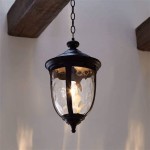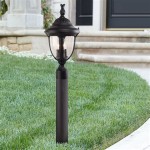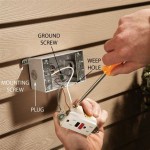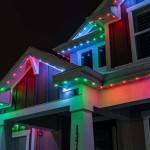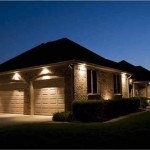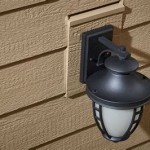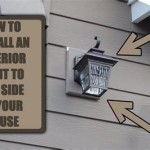How Do You Install Outdoor Lighting On Concrete Floors?
Installing outdoor lighting on concrete floors can enhance the aesthetic appeal and safety of your outdoor space. Whether you're illuminating pathways, highlighting landscaping, or creating a mood for outdoor gatherings, proper installation is crucial for achieving the desired effect. This article will guide you through the steps of installing outdoor lighting on concrete floors, providing insights into different fixture types, wiring considerations, and safety precautions.
Choosing the Right Fixture
The first step involves selecting the appropriate lighting fixtures for your needs. Concrete floors can accommodate a wide range of outdoor lighting options, each with unique features and benefits. Here are some popular choices to consider:
- Path Lights: These low-profile fixtures emit soft, downward-facing light, perfect for illuminating pathways and borders.
- Spotlights: Spotlights are ideal for highlighting specific features like trees, sculptures, or architectural details. They offer adjustable beams for precise illumination.
- Floodlights: Floodlights provide a broad, intense beam, suitable for illuminating large areas, such as patios or driveways.
- String Lights: Versatile and decorative, string lights offer a warm, ambient glow, perfect for creating a cozy atmosphere.
When choosing fixtures, consider factors such as:
- Brightness (Lumens): Determine the appropriate brightness level based on the area to be illuminated.
- Light Color (Kelvin): Choose a color temperature that complements the overall ambiance, warm white (2700K) for a cozy feel, cool white (4000K) for a brighter, more modern look.
- Style: Select fixtures that match the architectural style of your home or outdoor space.
- Material: Consider weather-resistant materials like aluminum, stainless steel, or composite materials.
Wiring Considerations
Proper wiring is essential for safe and effective operation of your outdoor lighting. The following guidelines will help you ensure a successful installation:
- Circuit Breaker: Install a dedicated circuit breaker for outdoor lighting to provide adequate power and prevent overloading.
- Ground Fault Circuit Interrupter (GFCI): Outdoor outlets and lighting circuits should be protected by a GFCI to minimize the risk of electrical shock.
- Wire Size: Determine the appropriate wire size based on the amperage draw of the fixtures and the length of the run. Thicker wires are necessary for longer distances and higher power demands.
- Conduit: Protect electrical wires by running them through conduit, which provides a weatherproof enclosure and helps conceal wiring.
- Outdoor-Rated Components: Use outdoor-rated electrical components, such as switches, outlets, and junction boxes, designed to withstand the elements.
Installation Steps
Once you have chosen the fixtures and planned your wiring, you can proceed with the installation process:
- Plan the Layout: Map out the desired positions of the fixtures and mark the location for mounting holes on the concrete floor.
- Drill Holes: Use a hammer drill with a concrete drill bit to create holes for the mounting screws. The size and depth of the holes will depend on the type of fixture and mounting hardware.
- Install Anchors: Insert appropriate anchors into the drilled holes to provide secure attachment for the fixtures.
- Run the Wiring: Run the electrical wires from the power source to the fixtures using conduit for protection. Consider using underground conduit if burying wires is necessary.
- Mount the Fixtures: Securely mount the fixtures to the concrete using the provided hardware.
- Connect Wires: Connect the wires from the fixtures to the main wiring, ensuring proper polarity.
- Test the Lights: Turn on the power and test each fixture to ensure they are functioning correctly.
Safety Precautions
Outdoor lighting installation requires safety precautions to prevent electrical hazards and injuries. Always follow these guidelines:
- Disconnection: Disconnect power to the circuit before working on any electrical components.
- GFCI Protection: Always use GFCI protection on outdoor circuits.
- Protective Gear: Wear safety glasses, gloves, and appropriate footwear when working with tools and electrical wiring.
- Professional Help: Consult a qualified electrician if you are unsure about any aspect of electrical wiring or installation.

How To Install Led Recessed Lights For Outdoor Concrete Spaces In Lite Lighting

Hardscape Outdoor Lighting

Diy Backyard String Lights Taryn Whiteaker Designs

Outdoor Ip67 Adjustable Recessed Led Light For Wall Or Ground Installation With 30 Tilt

How To Choose And Install Led Lights On Staircases Steps

How To Install Outdoor Lighting And Diy Family Handyman

Steps To Install A Garden Led Flood Light System Yourself Coadengineering

How To Light The Front Of Your House

4 Key Considerations About Bollard Lights Agc Lighting

How To Install Outdoor Lighting Fixtures
Related Posts
